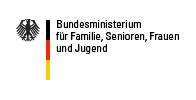Questions and approaches
Questions
A number of questions have been developed within the framework of Gender Budgeting, on the basis of which decisions with an impact on resources can be analyzed and their effectiveness with regard to gender equality can be assessed.
- What impact does a decision or measure with an impact on resources have on the life situations of women and men in all their diversity?
- Who benefits directly or indirectly from state expenditure?
- What is the impact of cuts on unpaid work and which social groups do this work?
- Which women or men pay which direct or indirect taxes (in the form of unpaid work) to the community?
- What decisions or measures with an impact on resources consolidate or change the existing gender roles?
Gender Budgeting approaches
There are no standard tools for putting Gender Budgeting into practice. This is mainly due to the very different national and local factors involved in decision-making on budget building and other resources. Existing experience can only be transferred to a limited extent. The various starting points and questions put forward by Gender Budgeting initiatives make it necessary to gear tools exactly to each set of requirements.
In the course of various Gender Budgeting initiatives, a number of approaches have been developed which have been summarized by Budlender et al into a set of seven ‘tools’. These ‘tools’ cannot be integrated directly into the manner of working of an administrative body, but they do nevertheless provide important orientation.
1. Gender equality-oriented assessment of political and economic strategies (by gender equality actors)
2. Gender-sensitive enquiry into and analysis of individual economic priorities.
These two approaches ensure the incorporation of the gender perspective into budget-relevant processes at actor level.
3. Gender-related breakdown of use of public payments (expenditures)
4. Gender-related breakdown of public revenues
5. Gender-related breakdown of the influence of public expenditures on the utilization of time
6. Gender equality orientation in medium-term financial planning
These four approaches (3. – 6.) permit a comprehensive study to be made of the impact of budgetary processes on gender relations in society. Using these four approaches, the gender-specific impact of apparently gender-
neutral budgetary policy actions can be rendered visible.
7. Gender equality-oriented budget declaration
The gender equality-oriented budget declaration includes an accountability report and is thus a form of controlling.
Tools and steps for action based on these Gender Budgeting approaches must be tailored to national and regional factors and to individual policy fields, subject areas and specialist departments in administrative bodies. GM tools already in existence should also be included in this so as to avoid the doubling of work. As an example, the Federal Government’s GM Working Aid on Legislation could be referred to for legislative projects for a gender equality-oriented assessment of the impact of the distribution of resources.
In the course of various Gender Budgeting initiatives, a number of approaches have been developed which have been summarized by Budlender et al into a set of seven ‘tools’. These ‘tools’ cannot be integrated directly into the manner of working of an administrative body, but they do nevertheless provide important orientation.
1. Gender equality-oriented assessment of political and economic strategies (by gender equality actors)
2. Gender-sensitive enquiry into and analysis of individual economic priorities.
These two approaches ensure the incorporation of the gender perspective into budget-relevant processes at actor level.
3. Gender-related breakdown of use of public payments (expenditures)
4. Gender-related breakdown of public revenues
5. Gender-related breakdown of the influence of public expenditures on the utilization of time
6. Gender equality orientation in medium-term financial planning
These four approaches (3. – 6.) permit a comprehensive study to be made of the impact of budgetary processes on gender relations in society. Using these four approaches, the gender-specific impact of apparently gender-
neutral budgetary policy actions can be rendered visible.
7. Gender equality-oriented budget declaration
The gender equality-oriented budget declaration includes an accountability report and is thus a form of controlling.
Tools and steps for action based on these Gender Budgeting approaches must be tailored to national and regional factors and to individual policy fields, subject areas and specialist departments in administrative bodies. GM tools already in existence should also be included in this so as to avoid the doubling of work. As an example, the Federal Government’s GM Working Aid on Legislation could be referred to for legislative projects for a gender equality-oriented assessment of the impact of the distribution of resources.
erstellt von Administrator
—
zuletzt verändert:
02.01.2010 20:07





